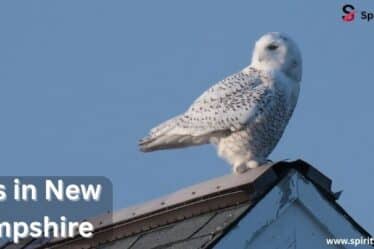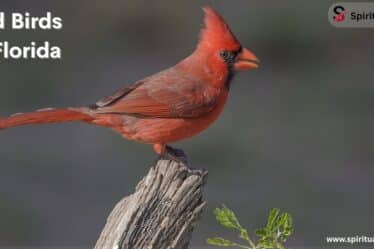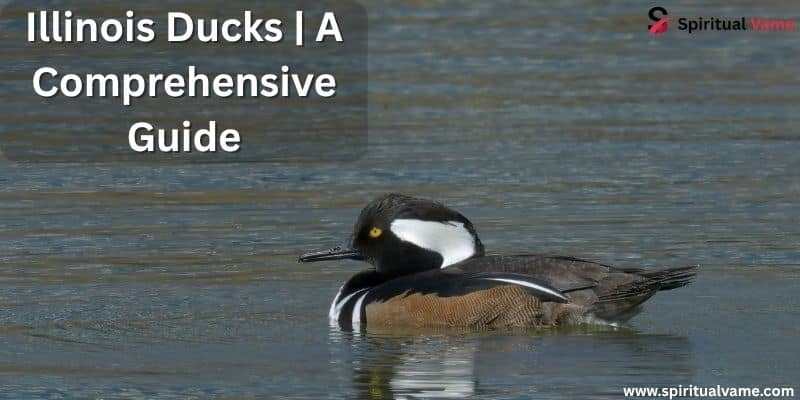
Illinois Ducks are a beautiful part of nature. You can see them in wetlands, rivers, lakes, and even in city parks. These birds come in many colors, shapes, and sizes. Some stay all year, while others visit during spring or fall. Illinois Ducks include dabbling ducks, diving ducks, sea ducks, and more. Each type has special traits that make it fun to watch and learn about. Whether you’re a bird lover or just enjoy nature walks, spotting Illinois Ducks is always a joy. This guide will help you know which ducks live in Illinois and what makes them unique. Let’s explore the amazing world of Illinois Ducks together.
22 Illinois Ducks Discover Unique Duck Varieties
Illinois’s strategic location along the Mississippi Flyway makes it a prime spot for observing a variety of duck species. These ducks are categorized into five groups based on their feeding habits and habitats: dabbling ducks, diving ducks, sea ducks, perching ducks, and whistling ducks. Understanding these categories aids birdwatchers and nature enthusiasts in identifying and appreciating the unique characteristics of each species.
Dabbling Ducks
Dabbling ducks feed primarily on the water’s surface or by tipping forward to forage underwater. They are commonly found in shallow waters like marshes, ponds, and wetlands across Illinois.
Mallard – (Anas platyrhynchos)
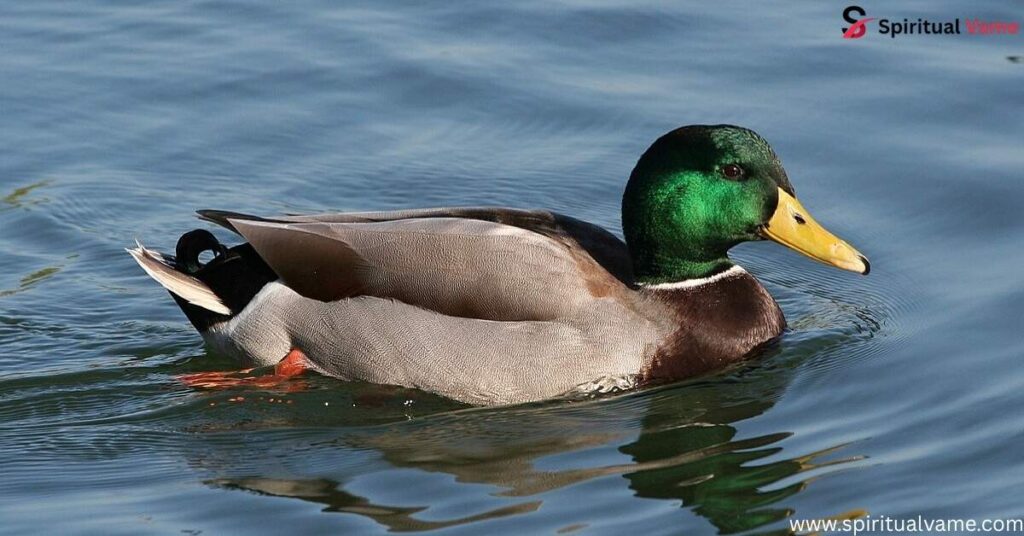
The Mallard is perhaps the most recognizable duck in Illinois. Males boast a glossy green head, white neck ring, and chestnut-brown chest, while females display mottled brown plumage. These adaptable ducks inhabit various water bodies, from city parks to secluded wetlands. Their diet includes aquatic plants, insects, and small fish. Mallards are known for their distinctive quacking and are a common sight year-round.
American Black Duck – (Anas rubripes)

The American Black Duck resembles the female Mallard but is darker with a purplish sheen on its wings. Preferring secluded marshes and forested wetlands, they feed on seeds, aquatic plants, and invertebrates. Their elusive nature makes them a prized sighting for birdwatchers.
Northern Pintail – (Anas acuta)

The Northern Pintail is elegant, with a slender neck and pointed tail. Males have a chocolate-brown head and white neck, while females are mottled brown. They frequent open wetlands and agricultural fields, feeding on seeds and aquatic insects. Pintails are migratory, often seen during spring and fall.
Gadwall – (Anas strepera)
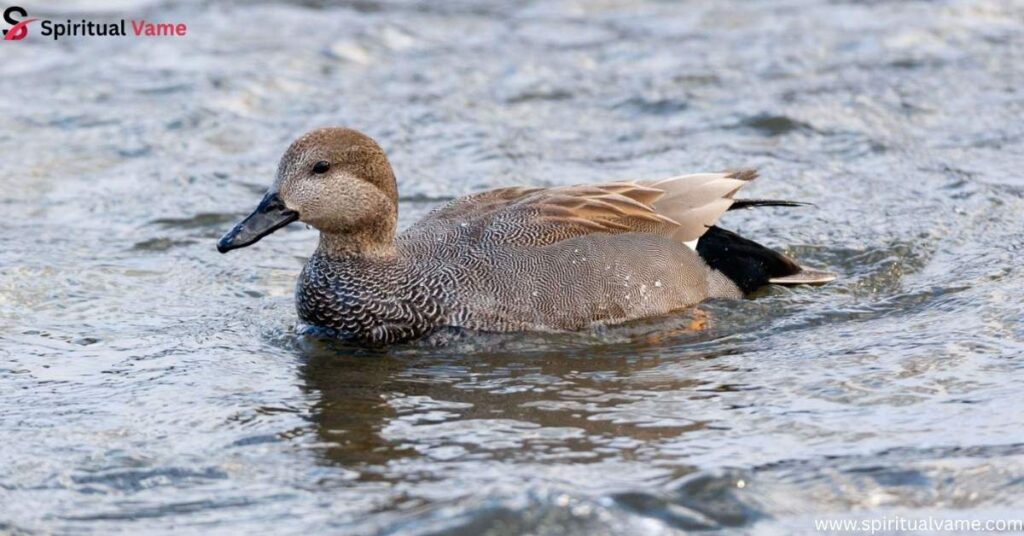
Gadwalls are understated in appearance, with males displaying gray-brown plumage and a black rump. They prefer ponds and marshes, feeding on aquatic vegetation. Their subtle coloring makes them less conspicuous, but their presence is a testament to healthy wetland ecosystems.
American Wigeon – (Anas americana)

The American Wigeon is notable for its white forehead and green eye stripe in males. They inhabit grassy areas near water bodies, feeding on aquatic plants and grasses. Their distinctive whistling calls often announce their presence before they are seen.
Northern Shoveler – (Anas clypeata)

With its large, spoon-shaped bill, the Northern Shoveler is adept at skimming food from the water’s surface. Males have a green head, white chest, and chestnut sides, while females are mottled brown. They favor shallow wetlands rich in invertebrates.
Blue-winged Teal – (Anas discors)
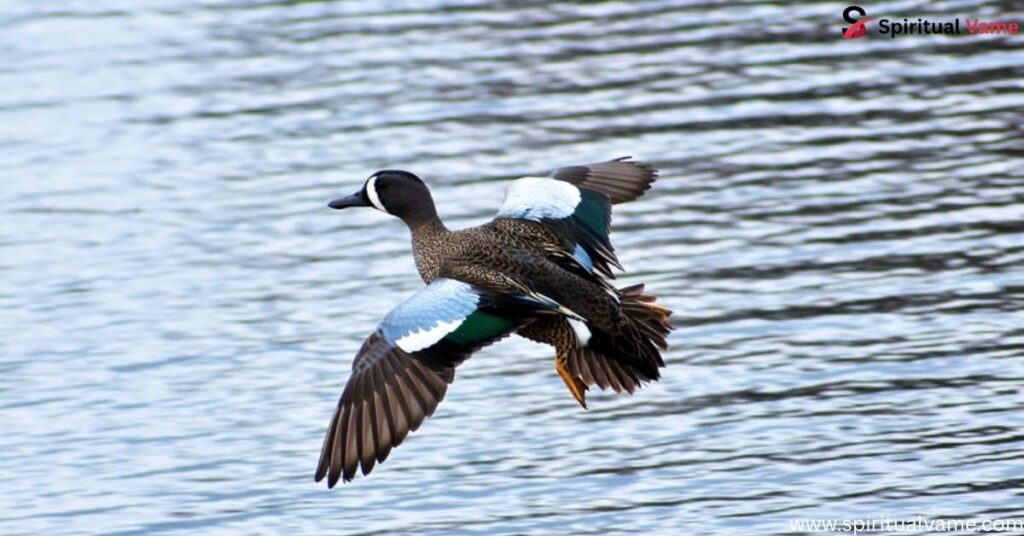
The Blue-winged Teal is a small, fast-flying duck with males showcasing a blue wing patch and white facial crescent. They prefer freshwater marshes and are among the first ducks to migrate south in the fall. Their diet consists of seeds and aquatic invertebrates.
Green-winged Teal – (Anas crecca)
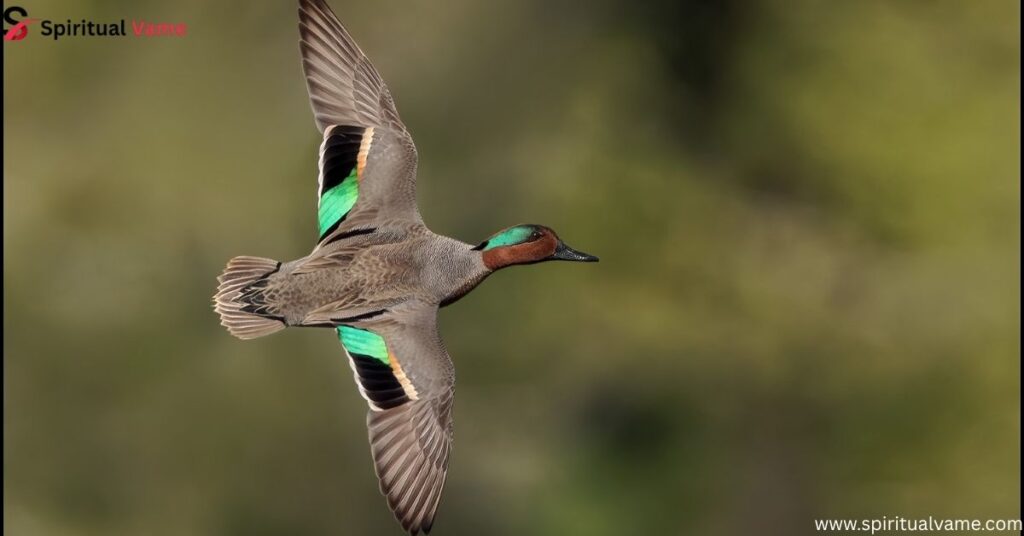
The Green-winged Teal is the smallest dabbling duck in North America. Males have a chestnut head with a green eye patch, while females are mottled brown. They inhabit shallow wetlands and feed on seeds and small invertebrates. Their quick movements and small size make them a delightful challenge to spot.
Diving Ducks
Diving ducks submerge completely to forage for food, favoring deeper waters like lakes and rivers. Their compact bodies and strong legs make them excellent swimmers.
Canvasback – (Aythya valisineria)

The Canvasback is known for its sloping forehead and red eyes. Males have a chestnut-red head and white body, while females are light brown. They dive to feed on aquatic plants and invertebrates, often in large lakes and bays.
Redhead – (Aythya americana)

The Redhead sports a rounded head with a reddish hue in males and a gray body. They are social ducks, often forming large flocks. Their diet includes aquatic vegetation and mollusks, and they prefer open water bodies.
Ring-necked Duck – (Aythya collaris)

Despite its name, the Ring-necked Duck‘s most noticeable feature is the white ring on its bill. Males are black with gray sides, while females are brown with a white eye ring. They inhabit smaller lakes and ponds, diving for plants and invertebrates.
Lesser Scaup – (Aythya affinis)
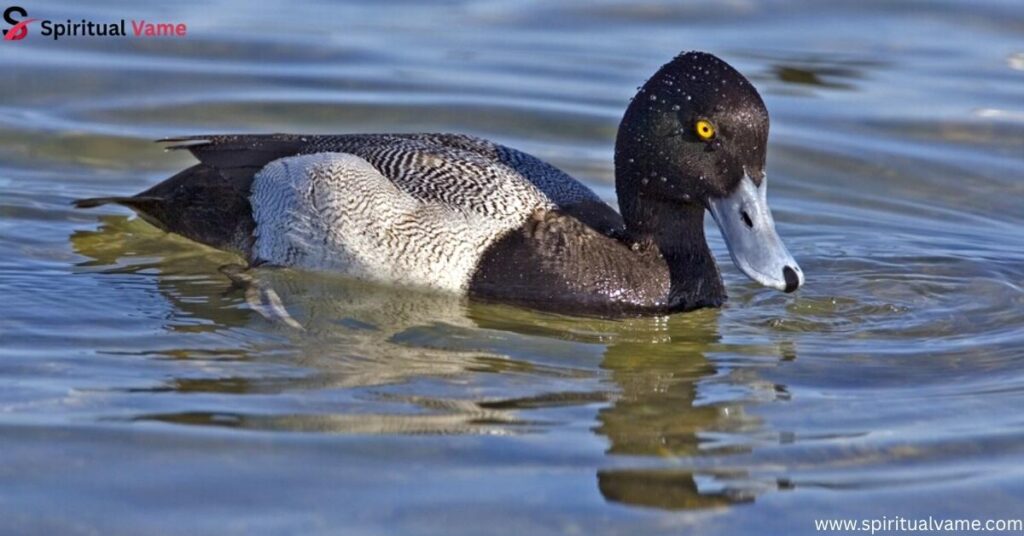
The Lesser Scaup is a medium-sized diving duck with males displaying a black head and chest with gray sides. They are common in Illinois during migration, feeding on mollusks and aquatic insects in lakes and rivers.
Greater Scaup – (Aythya marila)
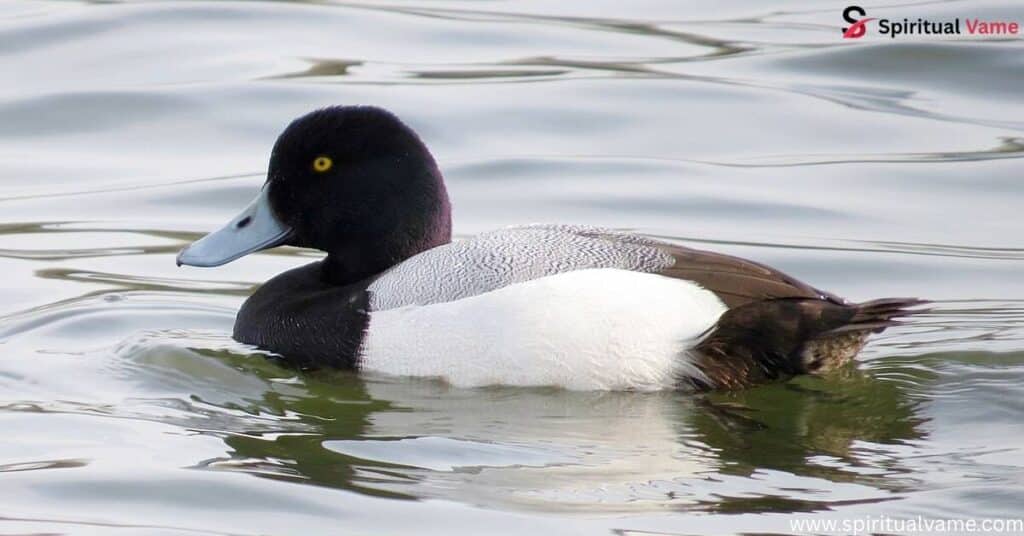
Similar to the Lesser Scaup but slightly larger, the Greater Scaup has a rounded head and greenish sheen. They prefer larger bodies of water and dive for mollusks and crustaceans. Their presence indicates healthy aquatic ecosystems.
Common Goldeneye – (Bucephala clangula)
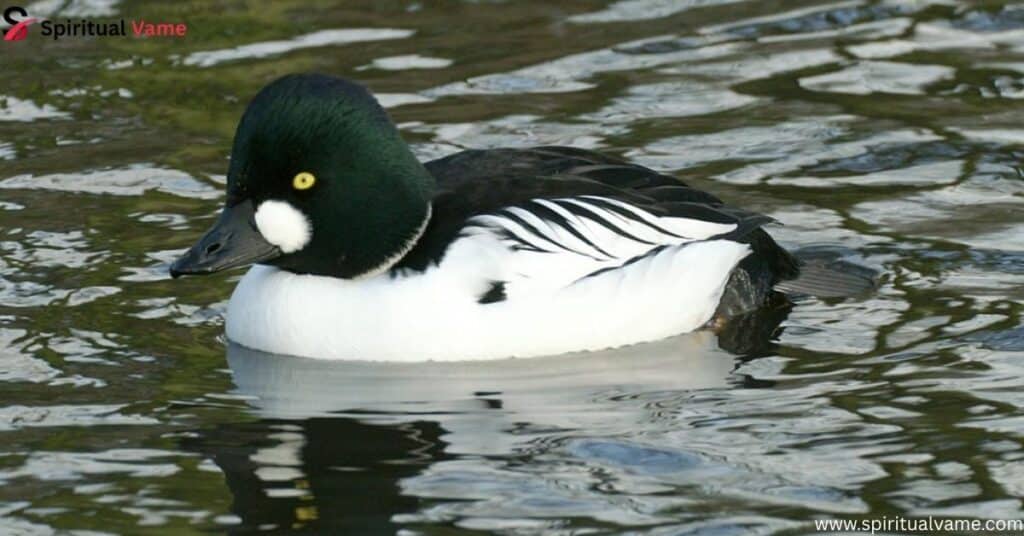
The Common Goldeneye is a striking black-and-white duck with a distinctive golden eye. Males have a greenish-black head, while females are gray with a brown head. They dive for fish and aquatic invertebrates in rivers and lakes.
Bufflehead – (Bucephala albeola)
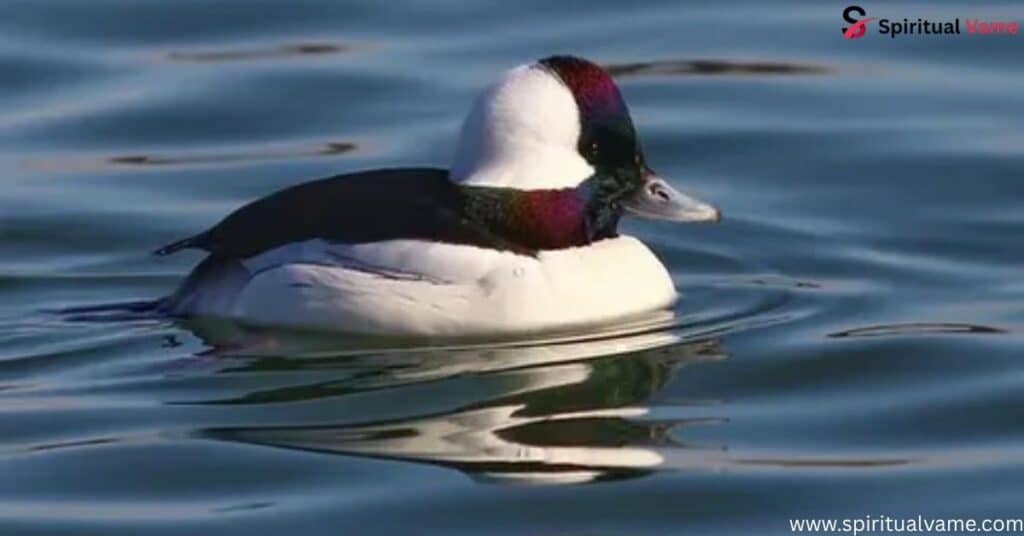
The Bufflehead is a small, agile duck with males displaying a large white patch on the back of the head. They prefer small lakes and ponds, diving for insects and crustaceans. Their rapid wingbeats and buoyant nature make them a delightful sight.
Sea Ducks in Illinois
Though typically coastal, some sea ducks venture inland during migration, stopping in Illinois’s large lakes and rivers.
Long-tailed Duck – (Clangula hyemalis)
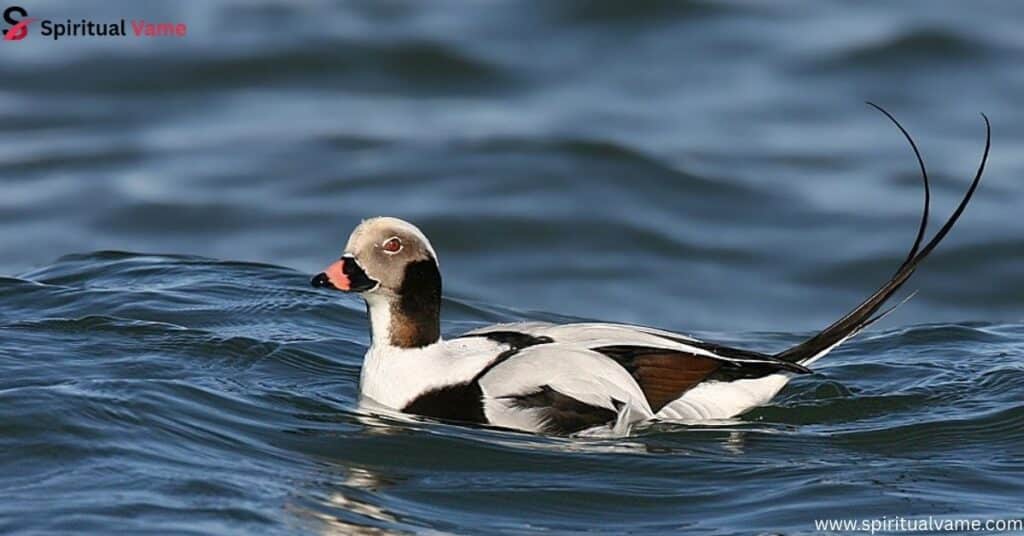
The Long-tailed Duck is known for its long tail feathers and complex vocalizations. Males are striking with black, white, and gray plumage, while females are more subdued. They dive deep for mollusks and crustaceans in large lakes during winter.
Ruddy Duck – (Oxyura jamaicensis)

The Ruddy Duck is small with a stiff tail often held upright. Males have bright blue bills and chestnut bodies during breeding season. They inhabit marshes and ponds, diving for aquatic insects and plants.
Perching Ducks in Illinois
Perching ducks are unique for their ability to perch in trees, often nesting in tree cavities near water.
Wood Duck – (Aix sponsa)

The Wood Duck is one of the most colorful ducks in North America. Males have iridescent green and purple plumage, while females are gray-brown with a white eye ring. They inhabit wooded swamps and nest in tree cavities, feeding on seeds, fruits, and insects.
Whistling Ducks in Illinois
Whistling ducks are named for their distinctive whistling calls and are more tropical in origin, occasionally found in Illinois.
Black-bellied Whistling Duck – (Dendrocygna autumnalis)

The Black-bellied Whistling Duck has a striking appearance with a red bill, gray face, and black belly. They are social and often found in flocks near wetlands, feeding on seeds and insects. Their presence in Illinois is rare but increasing.
Common Merganser – (Mergus merganser)
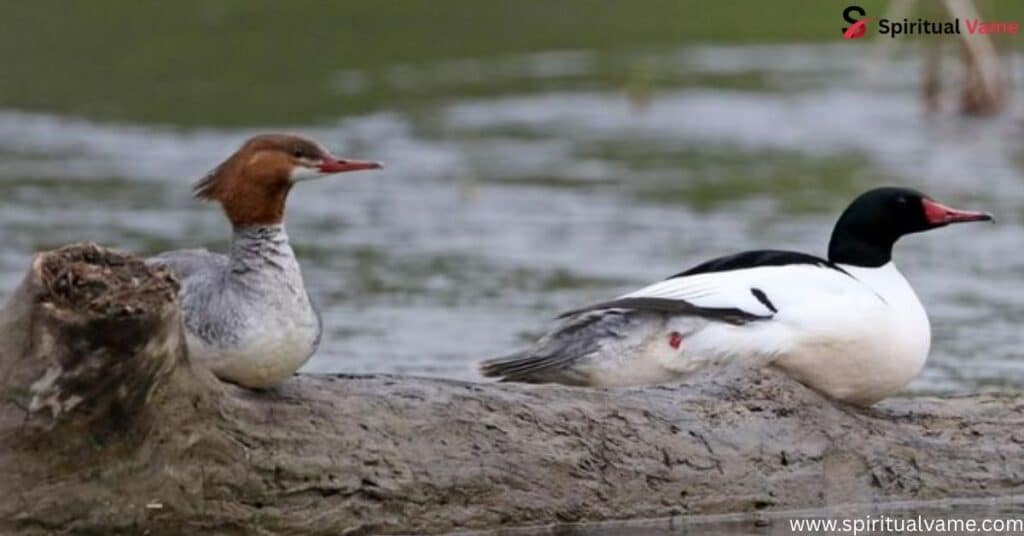
The Common Merganser is a large, sleek duck with a long, slender, serrated bill perfect for catching fish. Males have a striking appearance with a glossy green head, bright white body, and black back. Females sport a cinnamon-brown head with a white throat and gray body. These ducks are most often found cruising rivers and deep lakes in Illinois during the winter months. They prefer clean, clear waters and are excellent divers, using their keen eyesight to locate prey beneath the surface.
Red-breasted Merganser – (Mergus serrator)

The Red-breasted Merganser is a spiky-crested diver known for its slim build and fast swimming ability. Males have a dark green head, rusty chest, and thin red bill, while females show a shaggy reddish-brown head and gray body. These ducks are primarily seen during migration in Illinois and favor large lakes and rivers. Unlike many other ducks, Red-breasted Mergansers often forage in groups, herding schools of fish together before diving to catch them.
Hooded Merganser – (Lophodytes cucullatus)
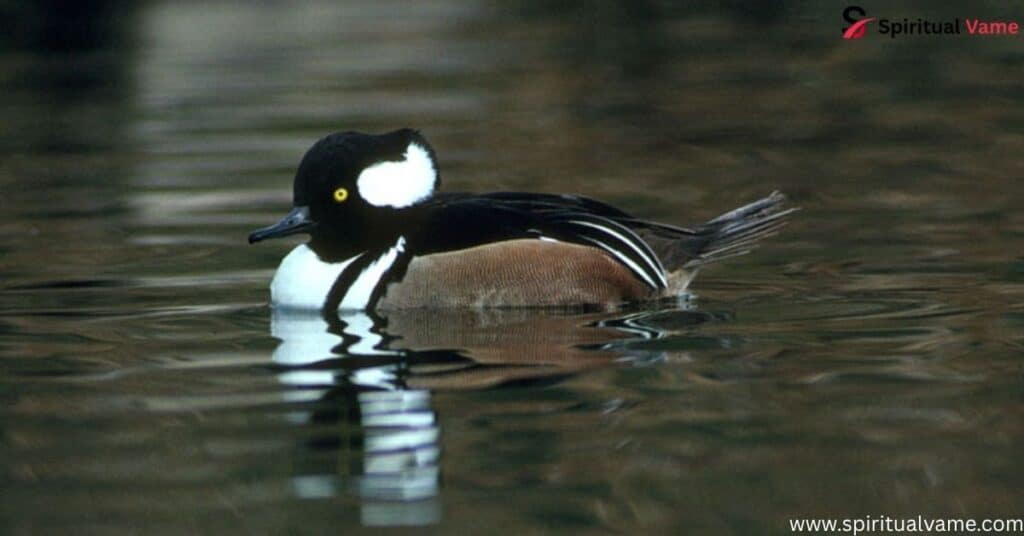
The Hooded Merganser might be the flashiest of the three mergansers. Males are easy to spot thanks to their large white crest, which they can raise or lower, and bold black-and-white coloration. Females are brown with a fluffy cinnamon crest. These small mergansers prefer wooded ponds, creeks, and flooded forests. They’re cavity nesters and are often seen in the same habitats as wood ducks. They feed mostly on small fish and aquatic insects, diving skillfully in search of food.
Conclusion
From vibrant teal to striking mergansers, Illinois ducks offer something for every birdwatcher, hunter, and nature enthusiast. Whether you’re visiting the sprawling wetlands of Chautauqua National Wildlife Refuge, the rich backwaters of the Mississippi River, or the serene pools of Emiquon Preserve, you’re bound to encounter one—or many—of these incredible species.
For beginners, start with common dabblers like Mallards or Blue-winged Teals. As your skills grow, you’ll learn to spot the more elusive divers and migrants. Birding not only connects us with nature, but also deepens our understanding of the ecosystems that support these incredible birds.

